A little while ago I introduced you to some of the coolest arachnids that live in the bug room. Today we are looking at some of the other brilliant bugs that also live there! Don’t worry, there are no spiders in the blog this week! Now, in no particular order:
Balthazar
Do you like the smell of vinegar and bugs with eight eyes? If so, Balthazar may become your new favourite invertebrate!
Balthazar is a species of whip scorpion called a Devil Vinegaroon (Thelyphonus sp. “Red”) and it lives in the forests of Malaysia.
Despite his name, Balthazar is completely harmless. Unlike traditional scorpion species, Balthazar has no stinger nor venom! Instead he has a flagellum (tail) that is covered with small hairs, allowing him to sense his surroundings. He can whip his flagellum around which is why vinegaroons are known as whip scorpions!
Now for the smell, vinegaroons have a gland at the base of their tail that produces an acrid fluid. This fluid gets squirted around as part of a defense mechanism attempting to deter predators from eating them because they smell bad.
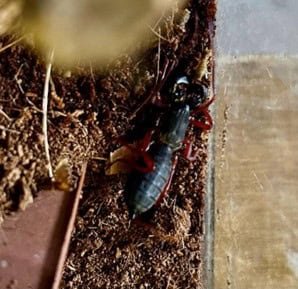
Two-Spotted Assassin Bugs
The two-spotted assassin bug (Platymeris biguttatus) is a venomous predatory beetle! Like it’s name suggests it is named after the two white spots that feature on the beetle’s wings. They thrive in their native habitat of West and Southwest Africa and range between 1-4 cm in length. They can live for about 2 years.
Assassin bugs are ferocious predators with needle-like mouthparts called rostrums. When hunting, they insert their rostrum into their prey, and inject their saliva which contains enzymes. This breaks down and dissolve the bugs insides turning it into a liquid. The assassin bugs then slurp up the nutrients like a milkshake through their straw-like mouth.
When looking in their tank you may see some small bright red bugs with yellow legs. These are their babies (nymphs). As the nymphs grow, they lose their red colouration getting darker and darker until they develop their wings and adult two spots!
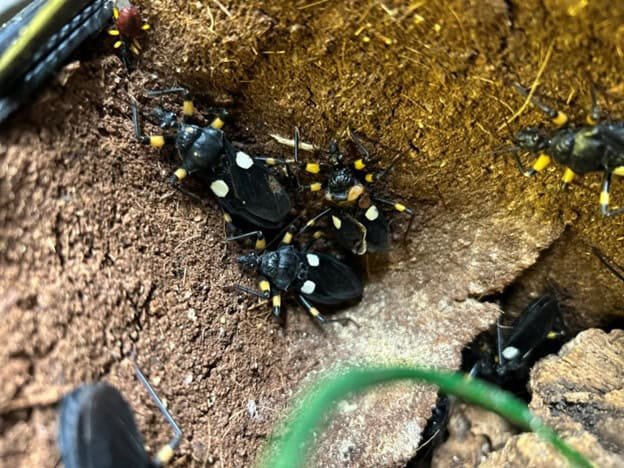
Bill, Ted, Sandra and Sheila
We have a group of four Giant African Millipedes (Archispirostreptus gigas). Giant African millipedes are the largest species of millipede in the world, averaging at about 33cm in length! They have approximately 256 legs but can reach up to 400 legs. The number of legs they have changes with each moult they go through! Unlike a centipede, millipedes have 4 legs (2 pairs) per body segment.
Giant African millipedes are harmless as a species and can smell and taste with the entirety of their body. When attacked by a predator they curl up in a ball and secrete a gross tasting and smelling liquid from their pores to try and stop themselves from being eaten.
Our group of millipedes are super friendly, and you’ll often see a couple out and about if not all four of them. As a detritivore, they mostly eat the rotting wood and leaf litter in their tanks, however they are partial to banana and tomato.
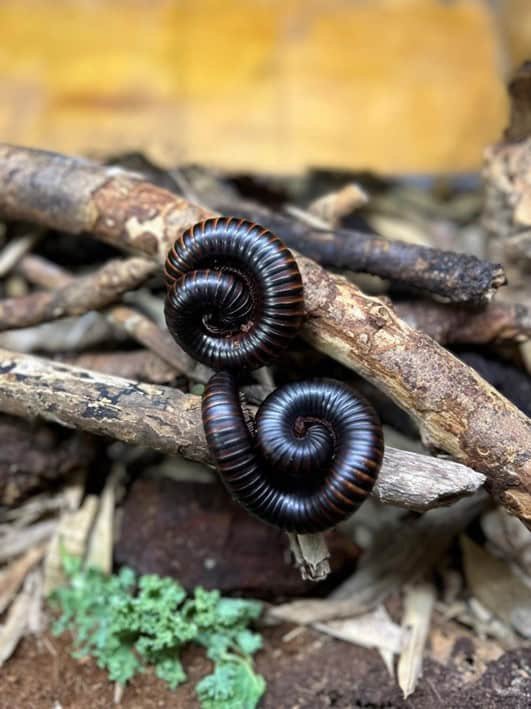
Red Legged Millipedes
The red legged millipede (Epibolus pulchripes) can reach up to 13cm in length and can live for 5-6 years and has an average of 750 legs!
Red legged millipedes are found throughout Kenya and Tanzania and tend to live in grasslands and coastal forests.
Millipedes are also very good mothers. Red legged millipede females lay between 10-20 eggs which the female will hold, clean, and protect her young, forgoing food to make sure her babies survive. However, if she is disturbed too much, she may eat her young herself!
If you visit the bug room to see these guys, you will be able to sex the individuals based on the colour millipede you see! If the millipede is matte, then it is a female, and the shiny ones are male!

Leaf Cutter Ants
There are many species of leafcutter ants, the ones we have here at Wingham are Acromyrmex octospinosus. This species of leafcutter ants harvest various plant material, often leaves, to help to cultivate fungus inside the nest which then feeds the colony of ants. Which makes these ants fungus farmers rather than leaf eaters!
These ants inhabit a variety of places from central to south America. They are widely known as an agricultural pest species and cause damage to crops.
These are an interesting species to watch as they often carry around bits of leaf on their back which is double the size of them!
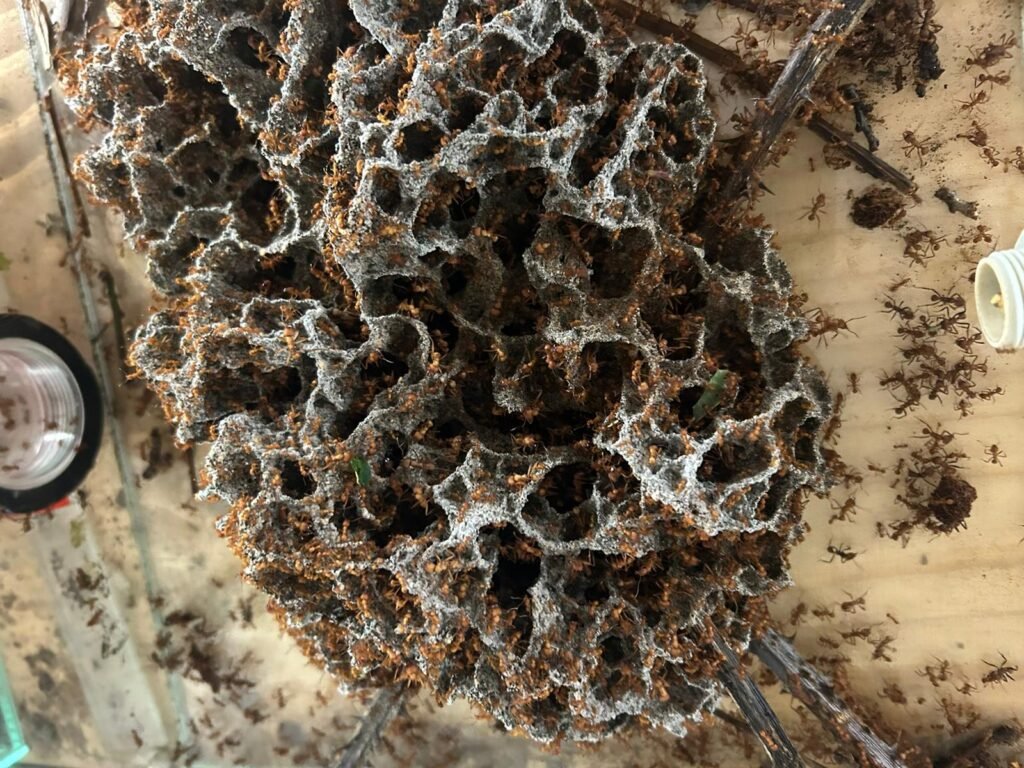
Source: winghamwildlifepark.co.uk






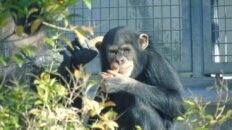
 Please wait...
Please wait...
Add comment